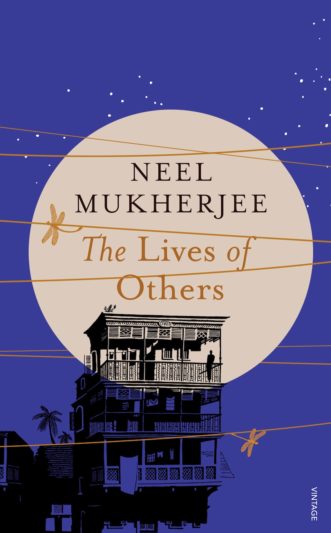 It is like cancer. It spreads through the living cells in your body, slowly and surreptitiously, without you even knowing. And then no matter what you do, it keeps spreading and spreading until it has had you completely in its grasp. That is what The Lives of Others by Neel Mukherjee will do to you. It will invade you and then keep you in its grasp till you become a member of that life. You are no longer a bystander to the Lives of Others, you have become a participant.
It is like cancer. It spreads through the living cells in your body, slowly and surreptitiously, without you even knowing. And then no matter what you do, it keeps spreading and spreading until it has had you completely in its grasp. That is what The Lives of Others by Neel Mukherjee will do to you. It will invade you and then keep you in its grasp till you become a member of that life. You are no longer a bystander to the Lives of Others, you have become a participant.
The story is set in the 60’s tumultuous Bengal marked with the audacious rise of the Naxal movement but draws extensively from the past pre-independent India to show a generation of the bourgeois Ghosh’s rise and fall into inevitable decadence. Its the story of Prafullanath Ghosh and Charubala Ghosh and their 5 offsprings who in turn add 6 more to the family tree. Prafullanath, the owner of a string of paper mills, Charu Paper & Sons Pvt Ltd, and closely related but now fallen out with the Ghosh Gold Palace, is a self made man who single handedly expands the one mill paper factory to become a large name in the paper mill industry. Adinath or Adi, the eldest of the next generation siblings, held a special place in Prafullanath’s heart owing to the fact that not only would he be able to carry on Charu Paper Mills but will most probably be able to expand his empire into the construction business. But when Adi aspired to study engineering, and Prafullanath realised that his offsprings, which he had carelessly expected to be extensions of his own being, his thought, his dreams, were actually trying to take their own flight, he dealt with the rebellion with an iron hand and got Adi into the business full time. Priyo, the second son and Chhaya the only daughter are only about a year apart and share an abstruse bond which only complicates with Priyo’s marriage and the birth of Baishakhi. Chhaya, the unmarried daughter of the household, a taboo much so in Indian society even now, slips into the mask of the vixen of the household, often using her unmarried status, which in turn is owing to her dark skin and her over education, to throw garner favors and throw taunts at her wish. And then there is Bhola, the weakling of the family as his interests and skills definitely didnot lie anywhere close to the operations of the family business. His interests lied in the abstracts – in literature and poetry, an interest akin to a liability in a business family like the Ghosh’s. And the youngest of all the siblings was Somu, who arrived 12 years after Adi, almost as an afterthought but instantly gripped the household in a frenzy of emotions and remained so till he died lynched by a mob of villagers in the western fringes of West Bengal.
The eldest grandson of the Ghosh family, the disillusioned Supratik, runs away from the house to join the nascent Maoist movement that was spreading its fangs in western and central West Bengal. Supratik’s letters written from his hideouts in the villages to an unknown recipient, intersperse the life as it unfolds at the four storied Ghosh residence at 22/6 Basanta Bose Road and brings to the reader a vivid description of rural Bengal mired in deep poverty and grandiose landlords. At around the same time in the heart of Calcutta, Baisakhi, the convent going teenager of Priyo and his better half, gets romantically entwined with the neighbor’s son, the news of which takes no time in spreading like wild fire across the neighborhood. And much to the surprise of the Ghosh family, the youngest son of Purba, the ostracized widow of Somu, turns out to be a mathematical genius.
The Ghosh family serves as the microcosm of the Bengali society of the 70’s; its fall from the height of intellectual greatness to the lows of political inaction or misaction if such a word can be used. The Lives of Others has no central character. Every member of the Ghosh family steers the story towards its intended destiny, in their pace lies the continuity of the lives of others. And all through the novel, Neel Mukherjee has used phrases directly translated from Bengali such as ‘ashes and cinders’ which give the prose a colloquial reality. Adinath’s change in the drinking habits from Johnnie Walker Black Label to Diplomat, the hasty shunning of the old and long trusted Madan, their household help who has as much a story to tell as any other, under the suspicion of a jewelry theft and the complete obsolescence of Prafullanath’s factories as well as his own self, alongside the non linear narrative takes the reader into a journey of the decadence of not just a family and a society but perhaps an entire era, an era of the Bengali elite.
This is my first Neel Mukherjee read and I have a penchant for Indian authors, in fact Indian and British authors, but having read The Lives of Others, I have no qualms in placing him right at the top of my list of Indian authors along with Amitav Ghosh. Read it for the astonishing story teller that Neel Mukherjee is and a gripping storyline that he has weaved without the a hint of extravagance.
My rating : 4.5/5
Buy it here : The Lives of Others by Neel Mukherjee







